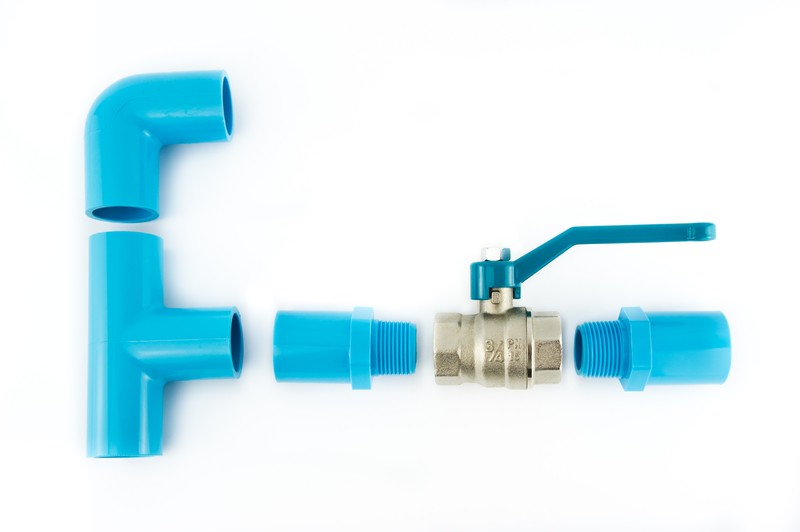PVC piping is a Godsend for those of us who are not trained as plumbers but have simple piping work to do.
But making sure your joints are leak-proof is vital to ensure you do not end up causing more damage than good; here are some tips how:
Make square cuts for strong joints
Square pipe ends fit snugly into the fittings, allowing plenty of contact area for the solvent cement to work. They also make a smoother interior surface for better water flow. A power miter saw and other special tube cutters guarantee square cuts, but you don't have to buy them.
For the best results, use a saw with fine teeth and a blade that's 3 or 4 in. wide. A hacksaw is a poor choice because the narrow blade tends to wander easily. Special saws for cutting plastic pipe are a worthwhile investment if you do much plumbing work.
Sand off the saw burrs for a better fit
Plastic burrs left from sawing can cause trouble. Outside the pipe they'll interfere with a good fit.
On the inside they can collect debris and slow the water flow. You can remove them with a file or pocketknife, but sandpaper is easier to use and works great. Simply roll a quarter sheet of 80-grit sandpaper into a tube and flatten it slightly to match the curve of the pipe. Then hold the sandpaper at an angle and sand the inside and outside of the plastic pipe until you create slightly beveled edges.
Mark the pipe and fitting for precise orientation
By the time you spread the solvent cement on both the pipe and the fitting and press them together, you have only several seconds to get the alignment right before the pieces are stuck together. That's why it's a good idea to make alignment marks beforehand on joints where orientation is critical. Dry-fit the pipe and fitting, using a torpedo level if needed to align the fitting, and make a mark across the fitting and pipe. Use these marks to align the fitting and pipe when you join them with solvent cement.
Push and twist for leak-proof joints
Wipe the inside of the fitting and the outside of the pipe with primer. Spread an even layer of solvent cement on the inside of the fitting and outside of the pipe.
Just swiping the pipe with cement and pushing on the fitting won't ensure a strong joint. You want to make sure you have an even layer of cement over all mating surfaces.
If you're using PVC or CPVC pipe, wipe primer around the pipe and into the fitting to prepare it for the solvent cement. Let it dry about 10 seconds.
Fix mistakes with a coupling
It's always a bummer to make a mistake. But at least with plastic pipe it's easy to fix. Simply saw out the messed up section, whether it's too long, too short or crooked. Correct the mistake and reassemble the joint with a coupling.
Use the proper solvent for each type of plastic
Match the solvent to the pipe
There are three common types of plastic plumbing pipe: PVC, CPVC and ABS. Each requires a different kind of solvent cement. The white or beige pipes (PVC and CPVC) also require a primer. You don't need a primer with black ABS pipe. Read the label to match the solvent cement to the type of pipe you're using. Avoid universal solvent cements.
For the amateur plumber, handyman or just average person trying to do simple plumbing (not, it should be noted, plumbing that requires Building Code Compliance,) PVC piping is a quick, inexpensive and easy to assemble alternative.
Joints, however, have to be leak-proof and these instructions are “must-follow” guidelines to ensure that happens every time.
For more information on projects and how to tackle them, whether you are working on a survival property or just around your house, please visit Family Handy Man.

Wait….this is actually hard for people.
I did landscaping and sprinkler systems for a while so that’s probably why it seems basic but to the average Joe and Jane I can see it being difficult
Lol, you’d be surprised
I thought the exact same thing when I read that.
I started doing it on my own when I was working in agriculture, honestly if you have half a brain you can do it, only things average joes may need info on is the primer and glue. And maybe which kinds are meant to be indoor and outdoor